If you are trying to find your next bow, or regularly look at the hottest bows like I do, you will probably notice that they just keep getting more expensive. You can definitely find affordable bows out there, but flagship bows are climbing well over $1000! Any sane hunter would wonder what they are getting for all that extra cash. Today we are going to find out if that $1500 bow is actually worth the cash and making your spouse mad, or if you can get away with spending less than $500 on a bow while still making your spouse mad.
Expensive compound bows come with plenty of nice bells and whistles, but you can get exceptional performance from bows that are a third of the price. Expensive bows have slightly better/cooler riser designs, solid cam designs, are faster, and come with brand names that impress your buddies.
While that is the skinny of it, there is plenty more to talk about. First, let’s figure out why there is no such thing as the perfect bow.
Give & Take
For starters, you can’t have the perfect bow. Every angle manufactures try to push a bow into, there are drawbacks. Of course, we all want a bow that is the fastest on the market, draws super smooth, has high let-off, little to no hand-shock, is lightweight, quiet, easy to tune, is forgiving to our bad form, and is as cheap as possible. Sadly, that bow just doesn’t exist.
Thanks to physics, you can’t have some aspects of the perfect bow without affecting others. For example, lightweight bows are generally more noisy, faster bows are less forgiving, low shock bows are generally a bit heavier, and the cheaper the bow, the less bow you get. Bows are like an engine, you can build it to be a horsepower heavy lightning bolt, or to have enough torque to pull a house, but not both.
Although the marketing doesn’t agree, not every bow is perfect. The company certainly isn’t going to tell you that either. You just need to be aware of these trade-offs and not get sucked into the buzzwords that companies put into their ads. Here are some basic relationships to know.
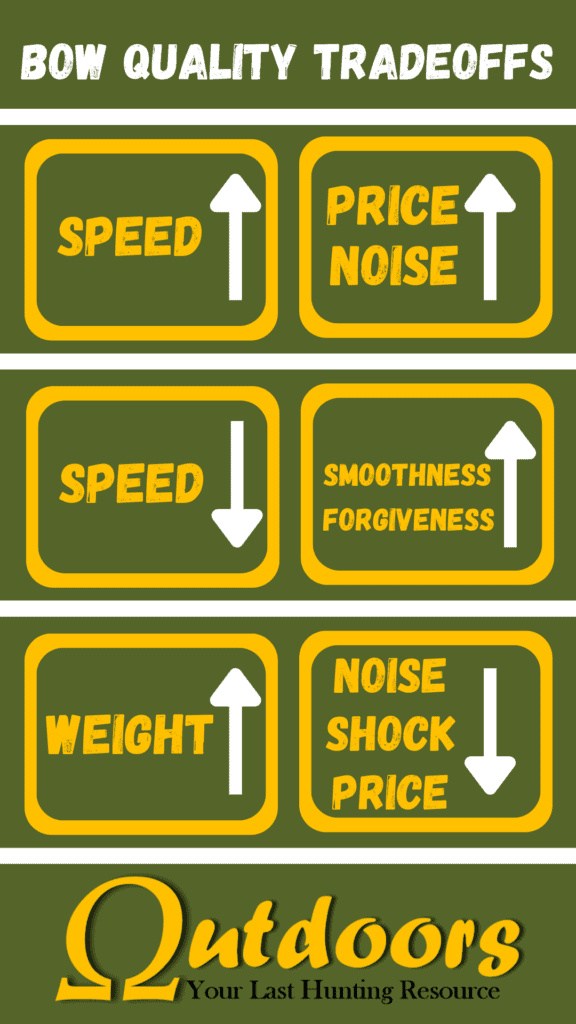
The Best Technology Costs Money
While you normally get what you pay for in the archery world, you don’t need the absolute best technology out there to kill a deer. Indians did it with sharp sticks. However, if you are going to pay for it, you should probably know what you are paying for. So let’s recap the most common components of a bow that get better with a price bump.
Improved Riser Designs
As the price of a bow goes up, you can expect the riser to get a bit more complicated and aggressive. Even within the same brand and product line, the riser will change. You will get more/different cut outs, which don’t really add to performance, but usually make the bow look cooler, which is what they are going for. More cutouts will also make the bow weigh slightly less.
Usually, bow risers are made out of aluminum which is a relatively lightweight metal, and it is the most cost effective to produce and therefore buy. Although you can also buy bows with a magnesium alloy riser. They will be slightly heavier, but forged magnesium alloy is much better at dissipating vibrations, so you get less vibration after your shot. Evenstill, aluminum risers do just fine and certainly do not have an excessive amount of vibration.
The hot new thing with bow risers is carbon fiber. Carbon fiber is an extremely strong material that you are likely used to seeing across all sorts of industries. Bow risers made from carbon fiber are much stronger than aluminum, about 10 times stronger. Although when they break, they really break. You can bend aluminum, but carbon fiber just snaps in two when it reaches its failure point.
When you think of carbon fiber, you probably think “lightweight”, and you would be right. You can expect to save around half a pound of weight if you have a carbon fiber riser instead of aluminum. One more benefit to carbon fiber is that it isn’t metal, and is not going to freeze your fingers when you are in a deer stand this November. Although you can bet you will pay a premium for the latest and greatest riser material.
Improved Limb Designs
Whether you love single or split limbs, you can expect them to get marginally better on more expensive bows. There is no single best type of limb out there, but on average, more expensive bows have less limb failures than cheap bows. More expensive bows may use stronger materials, or have a better limb angle. However, after parallel limbs became the gold standard, no one is really looking at bow limbs as a make or break decision when they buy. As long as they are parallel (which they usually are nowadays) then you’re fine.
Shorter Brace Height
When bow companies ramp the speed up of their flagship bows, that usually means you get a shorter brace height. A smaller brace height means the arrow stays on the string longer, and therefore goes faster. Although a brace height that is too small, less than about 6.5 inches, usually leads to a fast bow that is not very forgiving. The longer the arrow stays on the string, the more your form is going to affect it. So newer bow hunters are usually recommended to get a bow with a brace height north of 6.5 or 7 inches.
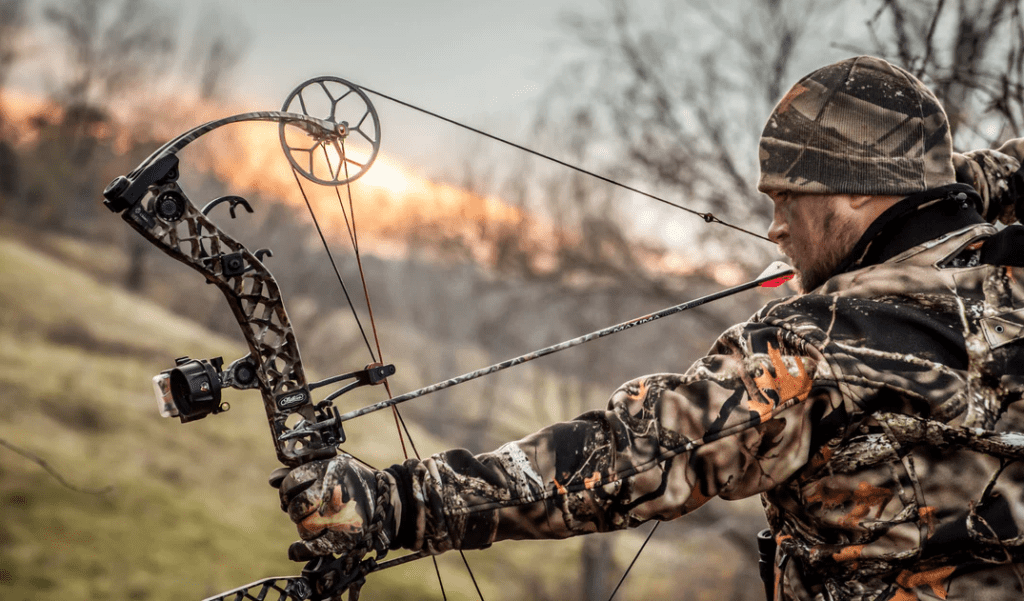
Improved Cam Design
The faster a bow goes, generally the more expensive it is. You can add speed in a variety of ways, but a crucial component to speed is your cam design. Most bows on the market today are hard cams, which hold the most amount of energy and therefore shoot the fastest. Medium cams, as you would expect, hold a little less energy than hard cams, and shoot a little slower. However, they are smoother to shoot.
Within the same product line, the kind a cam a bow uses can also change. Cheaper bows usually use a single cam system. These systems work just fine, but you wouldn’t expect to see a single cam system on a fairly expensive bow. Those bows usually have hybrid cams, and more recently have binary cams.
Single cams are a good place to start and are a respected cam choice, hybrid cams offer a little more speed and are quieter than single cams, and binary cams are exceptionally fast and eliminate any possibility of timing issues.
More Speed!
As price increases, you can expect speed to increase. Speed is the main selling point of the modern bow. Every bow ad you see usually starts off by stating how lightning fast their bow is. If they can convince you that you can kill more deer with their 350 fps bow instead of your 335 fps bow, they sell more bows. The truth is that a 300 fps bow is plenty fast enough to kill anything walking. Is it easier to kill with a 350 fps bow, probably; but is it worth the extra cash? Probably not.
You can also expect the overall efficiency of a bow to increase with price. We call this value a bows dynamic efficiency. A higher efficiency means more energy goes into the arrow, and the arrow goes faster. Unfortunately dynamic efficiency is not a number that bow manufactures put on the label, but you can find it online.
All the power that sends the arrow flying comes from you, and is stored in the cams and limbs. When you let the string go, that energy is transferred to the string, which sends the arrow forward. Although not all of the energy goes into the arrow. A portion of it goes into the bow and creates noise, vibrations, or burned up as friction. Nowadays, a 90% efficient bow is pretty good, 85% is acceptable.
Speed is A Money Maker
The biggest benefit to a faster bow is more energy in your arrow. You can find bow hunters talking about the kinetic energy of their arrows right now in a million different places online. A higher kinetic energy means more damage when the arrow reaches its target. Since kinetic energy only depends on mass and velocity squared, increasing velocity has an exponential effect on kinetic energy.
Another advantage of shooting a fast bow is that it will allow for more error when judging distance. For example, if you are shooting a slower bow and misjudge the distance on a deer, you may shoot too low and completely miss the deer or even wound it. If you are shooting a faster bow, you may only shoot an inch or two low and make a clean and ethical shot.
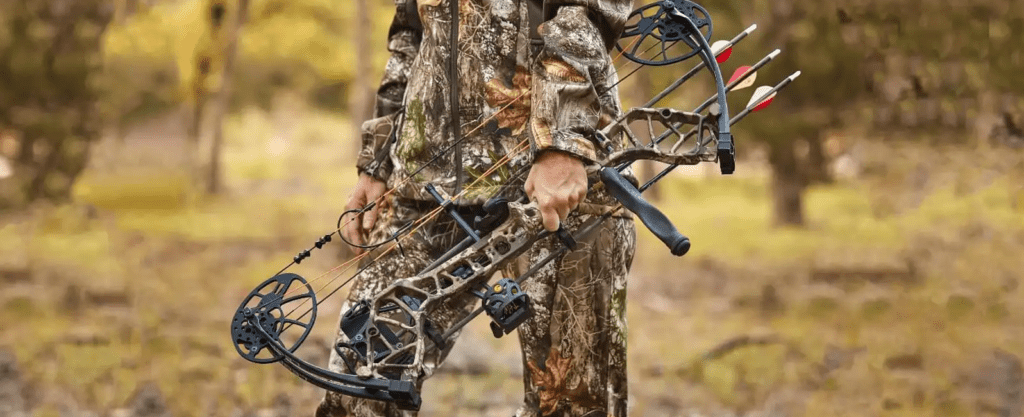
One side effect of a faster bow is that you are less likely to miss a deer if they jump the string. The faster your arrow can get there, the less chance the deer has of moving out of the way, plain and simple. This is great because even if you make a perfect shot on a deer, if they jump the string, your shot can end up in the dirt or their gut.
Another advantage of faster bows is that they allow hunters to shoot heavier arrows more effectively. Many hunters prefer shooting much heavier arrows for elk and moose than they typically prefer for deer. The faster the bow, the better the trajectory will be with a heavier arrow. This equates to less drop and more allowance for misjudged yardage.
Again, this doesn’t mean a slower bow is garbage because a new model is 15 fps faster. However, these are the factors that companies will harp on. They will also do their best to convince you that a slower bow isn’t going to cut it anymore, but that simply isn’t true. A 300 fps bow can do anything a 350 fps bow can.
Accuracy Comes At All Price Points
Another thing they will try to convince you of is that cheaper bows are inaccurate. That simply isn’t true. Could a bow made of higher quality materials be more accurate? Sure. Although I would expect a $1500 bow from company A to be held to the same manufacturing tolerances as their $500 bow. That means there should not be any difference in the way it is built, just the materials used.
I think it is also safe to say that the manufacturing tolerances and processes from all major bow brands is going to be exceptional. That being said, cheaper bows can certainly be very accurate. With the right care and maintenance, any standard bow can be more than accurate enough to shoot a deer. You can also do extremely well on a range.
If I had to bet, the large majority of hunters could increase their accuracy way more by making some key changes to their form, rather than buying a brand new bow. For example, if a baseball player strikes out and blames it on the bat, do you really think it was the bat’s fault?
What You Really Get From an Expensive Bow
At one point or another, every archer has probably seen a new flashy ad for the hottest bow on the market and asked themselves if that expensive bow is worth the money. The answer is no. With today’s technology, you really don’t need an expensive bow to hunt or shoot a target.
What you actually get from an expensive bow, is to say that you have an expensive bow. Sure, there are nice bells and whistles on expensive bows, but nothing that is game changing. Back in the day when there were real changes happening in the industry, like the use of parallel limbs, or introduction of hybrid cams, that gave you a real reason to buy a new bow.
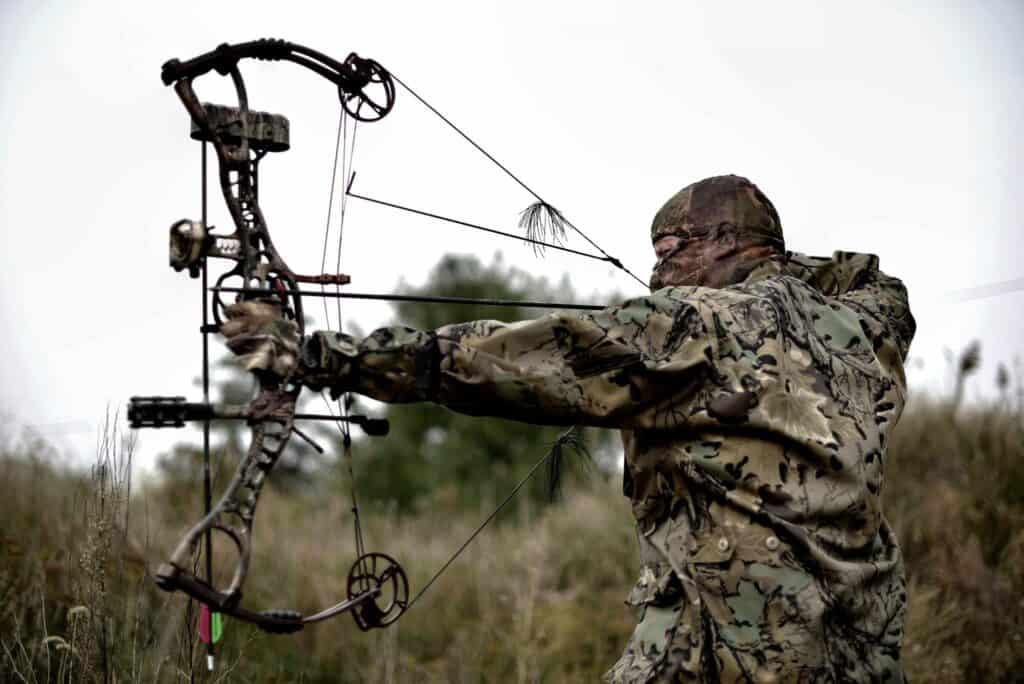
Those innovations really changed the game. Nowadays, that doesn’t happen as much. Every year manufacturers are making their processes slightly better and the product may be slightly better, but they aren’t leaps and bounds better. You can still compete with a 5 or 10 year old bow.
So what you should really do is buy a quality bow that you like and use it until the next revolution happens. Sure the bow industry is slowing down on revolutionary ideas, but I promise it hasn’t stopped. Buying a new bow every year or few years just is not as necessary as it used to be. So that really means that if you want to invest in an expensive bow, you can be comfortable knowing that it will be competitive for years to come.
How Much Should I Spend on a Bow?
This is a question that I can’t answer for you, but I can tell you what I do when purchasing a new bow. The first thing I do is figure out my budget. It’s important to be realistic here. You may be able to find a nice bow without sights, rest, or a quiver for $300-$700. Depending on what sights, rest, and quiver you buy, you could spend anywhere from another $150 to $400 or more.
Bows will not be obsolete in 5 years like they used to be when we were all fighting about cam and limb designs. Now you can buy a quality bow and stick with it. If you want to spend $2000 on your whole setup, go for it. Although you can certainly get away with spending less than $1000 on a bow, sight, quiver, rest, stabilizer, and arrows.
Additionally, some manufacturers make other more affordable bow brands. For example, Prime Archery produces Quest bows, and Mathews produces Mission Bows. Both Quest and Mission bows are quality bows that are much more affordable than their well-known counterparts.
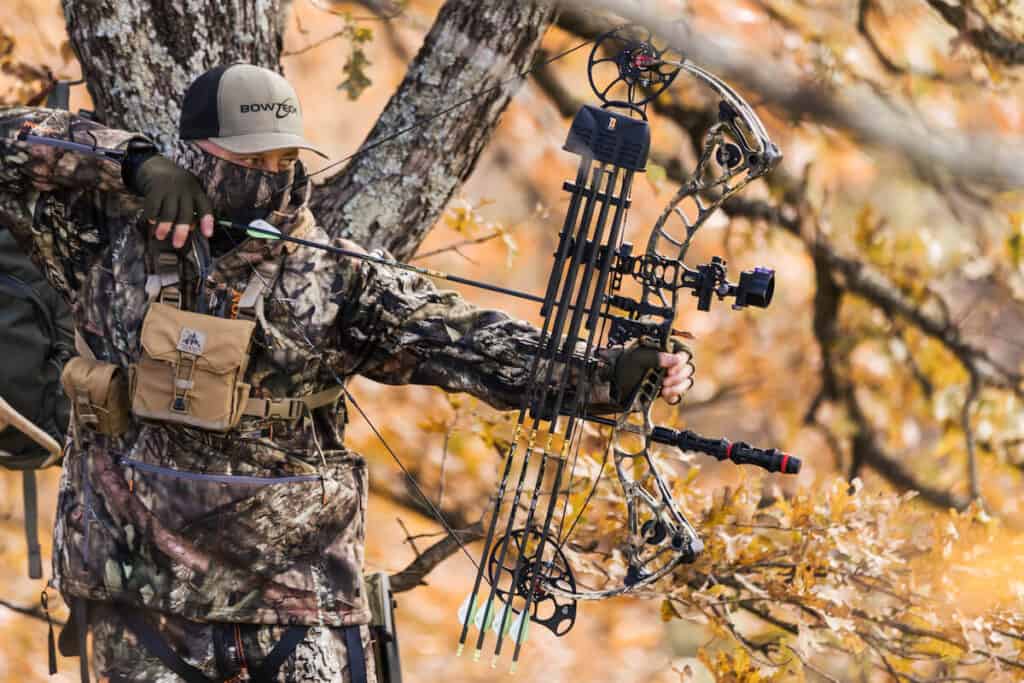
Bow Value Retention
Bows are a lot like cars, as soon as the new model comes out, the value of yours drops. That means if you buy a $1500 bow this year, it certainly will not be worth $1500 next year, even if it is brand new. Of course what it is actually worth depends on the market, but it will go down in value. There is also nothing you can do about it, everything that you “invest” into bow hunting or archery is going down the drain one way or another, manufacturers will make sure of it.
However, you can also use this to your advantage when buying a bow. Just like buying a used car can save you some cash, and you can still get a great product, you can buy a used bow. Buying a bow that is a few years old from another hunter is a great way to save money. If you recall, I have harped on the fact that brand new bows are not that much better than 5 year old bows in today’s market. So you can get a 2 to 5 year old used bow, and still be competing with the best bows on the market.
Getting The Best Thwack For Your Buck
If you do end up buying a used bow though, you need to be careful. You should inspect it from head to toe. The last thing you want to do is buy a bow that has something wrong with it. There is a fine line between a functioning compound bow and a one way ticket to the emergency room.
If you don’t want to go through that process, another good option is to look for discontinued models on bow manufacturer’s websites or pro shops. Purchasing a bow at a pro shop is an excellent option for people who are new to archery or aren’t sure what they are looking for in a bow. Plus you can get a good deal on an older bow and know that it works correctly.
Whatever bow you choose, the most important thing is to become proficient with it. Expensive bows will shoot badly in the hands of a poorly practiced archer just as easily as an affordable bow can shoot extremely well in the hands of someone that has honed their craft.
Sister Post | Do You Need a Nose or Kisser Button on a Bow?
A sister post is another post that I have written that follows along with the same topic as the one you just read. After reading this article, you will probably like this next one even more! Here is a little teaser…
When it comes to shooting your bow accurately, consistency and a repeatable motion are the name of the game to create pinpoint accuracy….Keep Reading
Consistency
This is the number one thing that kisser and nose buttons bring to the table when it comes to archery…Keep Reading
Confidence
Ever been in a tree stand or been shooting with friends and felt nervous about having to make a shot, hard or easy?…Keep Reading
Thank you for reading my article! I hope you enjoyed it, and if you have any questions or feedback, please send me an email at [email protected]. If you want to learn more about me or Omega Outdoors, visit my About Page. Otherwise, I hope you have a great day, and check out some of my other articles while you’re here!

